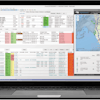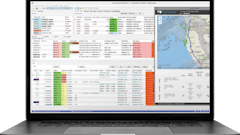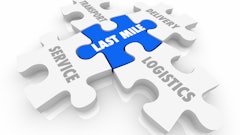Traditionally, the transportation department in most companies has busied itself with order consolidation, mode and carrier selection, tendering and freight settlement, pleased when it could get the product to the right place, hopefully on time, and with as few glitches as possible. Today, however, the scope of transportation management is expanding, and corporations — and their customers — are demanding that it also provide information visibility and synchronization for competitive advantage.
According to a report, "New Strategies for Transportation Management," published by the Boston-based research and analyst firm Aberdeen Group, more than a third of the respondents to its corresponding survey said they plan to adopt process changes over the next 18 months in order to deal with these internal and external changes.
"Because of these new pressures, it is vital for all companies to undertake improvement activity or they will find their hard-won freight cost reductions and service level improvement eroding away," the report stresses.
Aberdeen classifies "best-in-class" companies as the 20 percent that use practices that are the best currently being employed and that are superior to the industry norm. The report states that these firms are seeing cost and service benefits, as well as higher returns, because of their transportation initiatives. A full 40 percent of best-in-class firms testify to lower or dramatically lower than average transportation costs, and they also have better on-time delivery rates and larger absolute improvements than their peers.
The report says that to compete, companies must implement technology that goes beyond the local traffic department to enable rate calculations, shipment visibility, and faster and more sophisticated planning processes. Twenty-nine percent of companies surveyed said they are already taking the next step, switching from homegrown applications and spreadsheets to commercial transportation applications within the next 18 months.
Additionally, the report states, best-in-class and "industry norm" (the 50 percent of companies that use practices representing the average industry performance) companies are doing the following to improve their transportation performance: making fulfillment processes more demand-driven (responsive to customer requests, reactive to end-demand signals); controlling inbound freight; aligning transportation networks with cost and service objectives; and working with partners to create economical transportation processes.
So what can your company do to ensure your transportation processes are competitive? Aberdeen suggests that corporations learn to be better customers, working with carriers to rein in costs and secure capacity. This includes such steps as automating the carrier process, reducing dock dwell times, implementing self-service appointment scheduling and sharing frequent capacity forecasts.
Transportation executives should also take definitive steps to establish the transportation function as a part of the end-to-end integrated processes within the organization. Help it to become recognized as an information and activity synchronization platform that can be used by others in your company. This can be accomplished by expanding the value of transportation information (i.e. for manufacturing, purchasing agents, merchandisers, etc.), establishing collaborative shipping schedules, enhancing inbound freight management and increasing transportation planning velocity, for example.
Overall, Aberdeen suggests that companies, regardless of their size or transportation sophistication, should:
- Rely on customer demand to prioritize any transportation improvements
- Deliver value to other parts of the organization through extended transportation management processes
- Use scorecards and analysis to identify the root causes of service failures and cost overruns
- Become more carrier-friendly, thus buffering the supply chain from capacity shortages and rate hikes.














